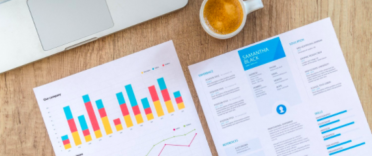
Below, we look at the different options available if you want to invest £10,000, the things you should consider before putting your money at risk as well as some first-time investor tips.
1 minute summary - How to invest £10k and get the best return
- When investing you should consider your risk appetite (the amount of risk you are comfortable taking) and your capacity for loss (how much you can afford to lose)
- If you prefer someone else to manage your investment decisions then you should speak to a financial adviser. VouchedFor* provides a list of independently vetted financial advisers. Alternatively, consider a digital wealth manager such as Wealthify*, Nutmeg or Moneyfarm*
- There are many options to choose from including savings products such as the Best Savings Accounts and Cash ISAs, as well as higher-risk options such as Stocks and Shares ISAs and pensions
The importance of understanding risk
If you are determined to hand-pick which investments you are saving into, it is crucial that you understand the concept of risk profile. Everyone’s risk profile is different. Risk profile comprises two main parts: your risk appetite and your capacity for loss.
Risk appetite explained
Risk appetite is the amount of risk you are comfortable taking. If you are in a constant state of anxiety over the ups and downs of your portfolio, any returns you make may simply not be worth the aggravation you feel. Remember, investing isn't for everyone. Any investment will rise and fall unpredictably, but some are typically thought of as riskier than others.
Capacity for loss explained
Capacity for loss is how much you can afford to lose. When you invest, the prices of the assets you hold will rise and fall. If you are forced to take your money out when the markets are low, you may get back less than you put in. If you can’t afford to lose any money, again, investing may not be for you. If you hold a diverse range of asset types (also called asset classes) and funds, it is very unlikely that the value of your portfolio will reduce to zero. However, it is not unheard of for stock markets to rapidly lose large swathes of value in a crisis.
Your portfolio should ideally be as risky as it can be without exceeding either your risk appetite (how much risk you are comfortable taking) or your capacity for loss (how much you can afford to lose).
This is an easy principle to read but a much more difficult one to put into practice. If you are not comfortable making your own investment decisions then it could be a good idea to either speak to a financial adviser. Check out our 10 tips on how to find a good financial adviser. Alternatively, you could use a digital wealth manager (see the foot of this article) who will invest your money for you.
How to invest £10k and get the best return
If you are looking to invest around £10,000 then there are a number of considerations. Some of the most important ones include:
1. Determine your investment timeframe
Remember, investing is for the long-term. If you think you’ll need your money in fewer than five years, investing may not be for you. The longer you save, the more time you’ll have to let returns compound as share prices rise. Any shorter than five years increases the risk of your portfolio going through a period of loss from which it cannot recover within your timeframe. In this instance, you would be better off putting your money into a high-interest savings account. Check out our article ‘How to set investment goals and timeframes‘ for more information.
2. Minimise costs
When you invest, how much you pay in fees is one of the only factors you can control and predict. It’s important to remember that fees present a direct drag on any returns you make – and they’ll be taken out whether you make money or not. This means that in a year where your portfolio loses money, the subtraction of fees could actually increase that loss. Look for funds that have low fees – anything around 0.75% or lower.
3. Diversify
Diversification is sometimes called the one free lunch in investment. By saving into many different types of asset (corporate and government bonds, shares, property and so on) you can possibly mitigate the effects of downturns in certain markets. Even within shares, those from different regions and business types don’t necessarily move up and down together, so holding many can protect you from the worst losses. Check out our article ‘What is an asset class and what are the different types?'
4. Build a portfolio
Taking costs and diversification into account, you can build a portfolio. We recommend using low-cost funds and trusts rather than picking your own stocks – a risky practice even professionals struggle to do well. Divide your money between a handful of different low-cost funds: UK equity, UK corporate and government bonds, US equities, emerging markets, European equity, and maybe property. Remember, diversification and low costs are the keys here.
5. Choose between active vs passive investing
One way to keep costs down is by using passive funds, also known as index funds. Rather than employing an expensive manager and research team to pick stocks, an index tracking fund just aims to deliver the same returns as its target index (the FTSE All Share or FTSE 100, for example). These can be purchased for a fraction of the cost of actively managed funds, the latter of which often underperform the index anyway.
6. Cash can be a destination
Good savings rates can yield ok returns. Depending on your risk profile, you may wish to keep some of your savings in cash. This is fine. Although the buying power of your savings may diminish due to the effects of inflation, you will not lose any of your capital and may even make a bit of interest. If you are willing to lock your money away for a while you may be able to find a savings account that pays a decent interest rate while keeping your money safe. See our Best savings accounts article.
Types of investment and savings for £10,000
We've discussed the things to consider when investing but what types of investment products can you use to actually start investing? Below we list the main investment products/services someone investing £10k would consider using:
1. Savings accounts
Savings is about as plain as you can get with your money, although that’s not necessarily a bad thing. With a savings account you’ll get a pre-determined interest rate paid in periodically, and your cash will not be exposed to the ups and downs of investment markets. In fact, even if your bank goes bust much of your money will be protected by the Financial Services Compensation Scheme. Keep in mind that savings rates tend to be relatively stingy – so you probably won’t earn more than a couple of per cent. Compare what’s on offer with our summary of the best savings accounts in the UK here.
2. Cash ISAs
Cash ISAs are savings products that not only pay a little interest, but also protect your money from the tax-man. You won’t have to pay tax on any interest you earn on the money in your ISA. Cash ISAs often require you to lock your money away for a period, but they will typically pay more than a normal savings account. Compare cash ISAs with our regularly updated best-buy tables here.
3. Stocks and Shares ISAs
Savings accounts and cash ISAs are savings products, not investments. You won’t lose any money you keep in them. A stocks and shares ISA, on the other hand, allows you to buy units in a fund, shares in companies, bonds, or other investment assets. The prices of these assets can fall or rise, so you will be taking on more risk than you would with cash. Instead of earning interest however, your returns will depend on rises in the asset prices combined with any coupon or dividend payments you receive. In other words, you have a chance to make more than you would with cash, but also a chance to make less or lose money. As with a cash ISA, holdings in a stocks and shares ISA are not subject to tax – in this case, either dividend tax or capital gains. Here you can compare costs and pick a stocks and shares ISA provider.
4. Lifetime ISAs
Lifetime ISAs are ISAs designed to help young people save for their first home or put away money for retirement. Investors can save up to £4,000 per year in either cash or investments. The government then adds a 25% top-up to new contributions, equal to up to £1,000 per year. The bonus stops when you turn 50. Check out our article Compare the best and cheapest Lifetime ISA for more information including details on penalty withdrawals. If you are in the process of buying your first home, then check out our ‘First-time buyer guide‘
5. Pension
A pension (often referred to as a SIPP) is a product designed to help fund your retirement. Contributions into the pension receive tax relief at your highest marginal rate and all investments held within it grow tax-free. From an investment perspective (the types of investments you can hold) they offer the same flexibility as a Stocks and Shares ISA. However, money put into a pension cannot be accessed until you are aged 55. If you want to find out more you can read our guide ‘How do I set up a pension? Everything you need to know‘. If you are unsure of whether you should invest in a Pension or an ISA, check out our article Pension vs ISA – Which is the better investment?
6. Digital Wealth Managers (Robo-advisers)
In this digital age, there is now a myriad of low-cost options for the new investor. Over the last few years, using a digital wealth manager (aka a robo-adviser) such as Wealthify has become one of the most popular and cost-effective options for someone looking to invest £10,000. Check out Wealthify* where you can invest from as little as £1. It is the cheapest of all the robo-adviser's when investing up to £10,000 and you have the choice of investing in a pension, stocks and shares ISA, junior ISA or general investment account. Alternatives include Nutmeg and Moneyfarm* which both offer advice services as well.
Another low-cost investment provider is Vanguard, which is famous for its ultra-cheap index-tracking funds. Vanguard now has a direct-to-consumer investment site, however one of the drawbacks is that you still have to build your own investment portfolio (unless you decide to simply choose one of their Lifestrategy funds). If you are a fan of Vanguard's funds and low fees then one of the cheapest ways for most investors to hold Vanguard funds would actually be via Interactive Investor (known as ii). Interactive Investor is the second largest investment platform in the UK and is the largest to operate a fixed fee model. Check out Interactive Investor* or read our Interactive Investor review to find out more.
If a link has an * beside it this means that it is an affiliated link. If you go via the link, Money to the Masses may receive a small fee which helps keep Money to the Masses free to use. The following link can be used if you do not wish to help Money to the Masses or take advantage of any exclusive offers – Wealthify, Moneyfarm, Interactive Investor



